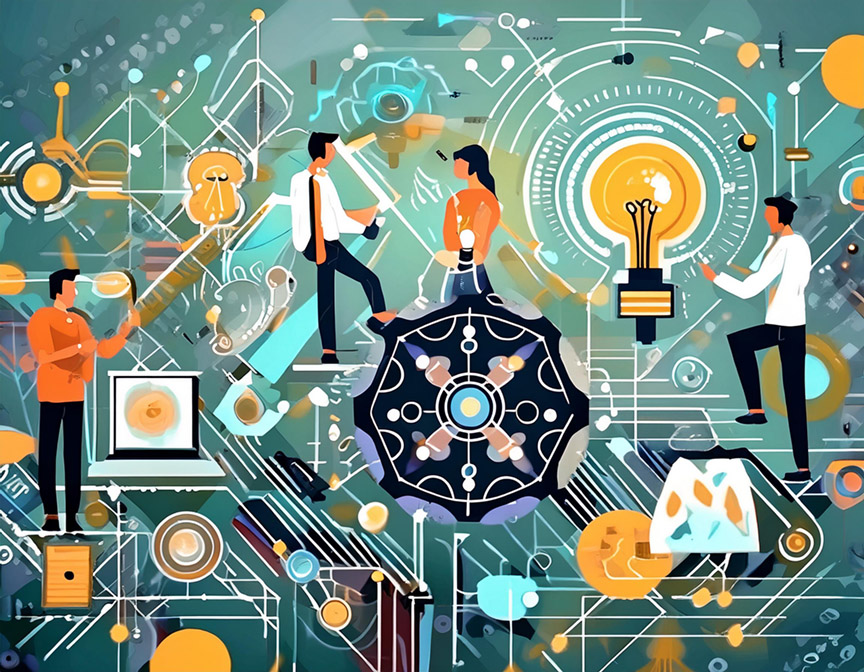
In this guide’s development, 50 students from 47 different U.S. colleges and universities shared their uses of and attitudes toward artificial intelligence in qualitative interviews. In addition, dozens of students from five colleges and universities contributed questions and inspired the Frequently Asked Questions section.
The student-submitted questions were consolidated into five themes. Here are the questions, along with answers developed by contributors to this guide:
How will AI change how we learn in the classroom in the future?
While the role of teachers and mentors will remain central in fostering critical thinking, creativity and student development, many believe AI can be an asset for classroom learning. AI can create custom curricula and tutoring plans designed for individual students’ needs and pace. These tools can also help identify students who need additional support or enrichment. AI can provide fast feedback on assignments, freeing up time for professors to focus on higher-level instruction and one-on-one interactions with students. Specialized AI tools may change instruction methods in math and science labs and enable simulations in many different disciplines.
Where is the line between using AI to generate ideas and cheating?
The line depends on how AI is used and the rules set by faculty members. Generally, using AI to brainstorm or explore concepts isn’t cheating if a student uses those ideas to inspire their original work. Submitting AI-generated content as one’s own work without significant modification and proper attribution of sources is cheating. Be honest and open. Disclose AI use as required and be ready to demonstrate your own understanding and skills. If you are unsure about the guidelines on acceptable AI use, ask questions. The goal of education is learning. You should use AI as a tool to enhance your understanding and skills, not to bypass or shortcut the learning process.
What will the speed of change in AI be like going forward – will it alter everything?
Most experts predict the rate of AI development will remain high. Expect to see continued improvements in language models, new ways to interact with AI by voice and video, and AI systems customized for specific applications. Major advances are expected in healthcare, education, scientific research, business operations and more. However, AI may not “change everything” in the next few years. The speed of public adoption of AI, the cost of creating new AI systems, government regulation and business factors will influence the rate of AI’s evolution.
What types of jobs are most at risk of being automated by AI?
Jobs most at risk of AI automation tend to be those involving routine tasks, such as data entry, basic administrative work and customer service. Many aspects of bookkeeping, accounting and financial analysis will be impacted by AI. Repetitive assembly line jobs continue to be at risk. Other fields that may face disruption include basic legal work (document review, contract analysis), journalism and creative work like graphic design and content creation. As AI advances, the landscape of jobs will evolve. While some jobs change or are eliminated, new ones will emerge. People who adapt to AI will be best positioned to succeed in their careers.
If we rely on AI for everything, will that diminish our critical thinking and creative skills?
Overreliance on AI could diminish your critical thinking and creativity, but it’s not an inevitable outcome. The key lies in how you integrate AI into your life and your education. AI can handle routine tasks and provide quick information, allowing you to focus on developing higher-order intellectual skills. However, if you use AI as a crutch rather than as a tool, your ability to use your own critical thinking and creative skills may decline. Think of the old adage “use it or lose it.” Consider AI as an assistant rather than a shortcut. Prioritize your own, original thinking, hands-on problem-solving and creative expression.


